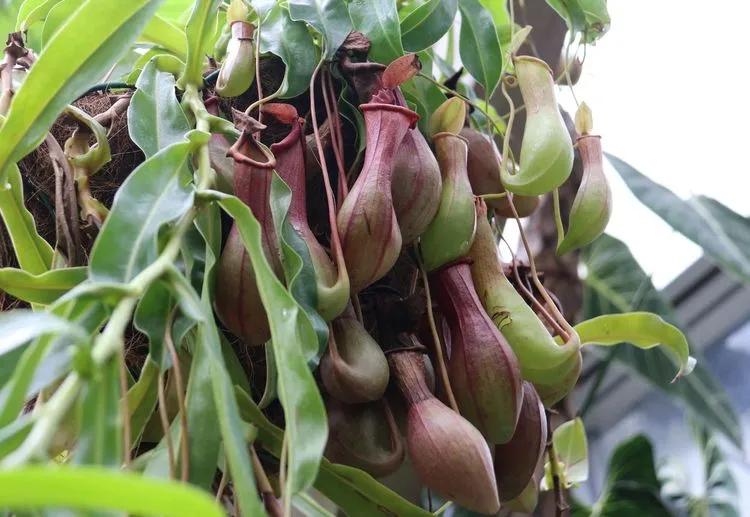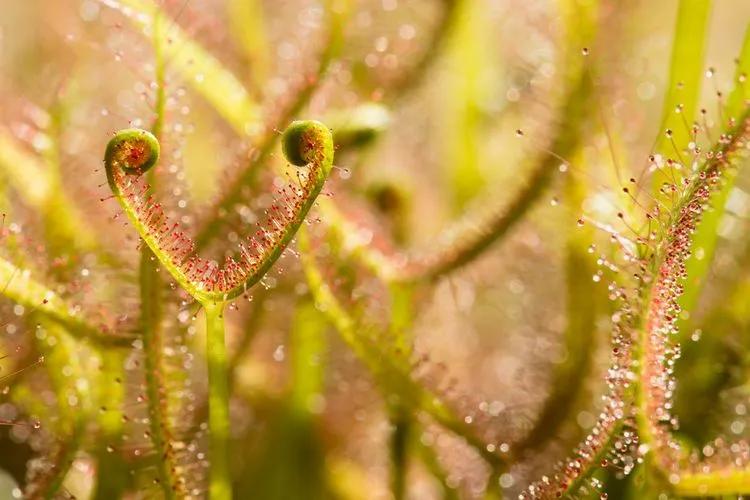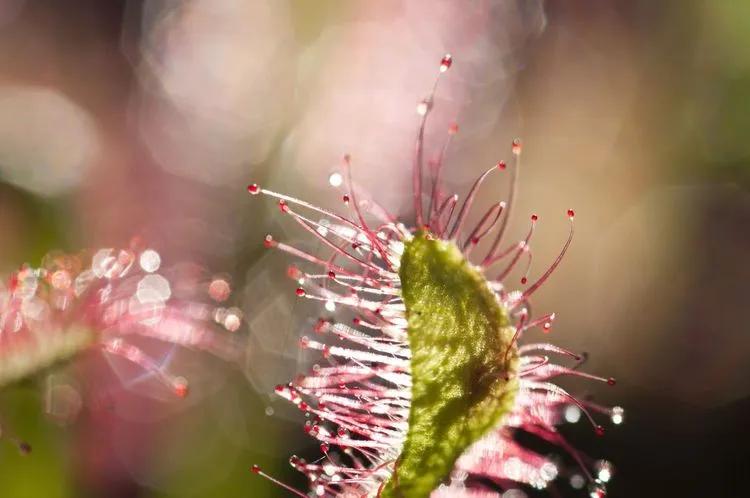 Have you ever met predatory plants? Then we want to introduce you to carnivorous plants! Don't be afraid: they won't harm you, but some flies might be in danger. In this article, we will explain to you how to take care of these unusual plants.
Have you ever met predatory plants? Then we want to introduce you to carnivorous plants! Don't be afraid: they won't harm you, but some flies might be in danger. In this article, we will explain to you how to take care of these unusual plants.
What is unique about carnivorous plants?
 More than 600 species of carnivorous plants worldwide need sunlight, soil, water, and….. other living creatures to survive. They consume microbes, insects, and even rats or frogs! In the wild, these plants live in boggy places. Such an environment doesn't provide plants with many nutrients, so that's why they catch prey.
More than 600 species of carnivorous plants worldwide need sunlight, soil, water, and….. other living creatures to survive. They consume microbes, insects, and even rats or frogs! In the wild, these plants live in boggy places. Such an environment doesn't provide plants with many nutrients, so that's why they catch prey.
As a result of the evolutionary process, they have adapted to this lifestyle: they attract insects or little mammals with their bright colors and alluring scent. Also, they are equipped with real traps that can catch the prey and digest it.
But how to take care of them at home? By the way, not every carnivorous plant is suitable for home planting. You can choose between Venus flytrap, butterwort, cape sundew, spoon leaf sundew, and tropical pitcher plants.
Soil
It's not hard to realize that carnivorous plants are not regular house plants, and they need special care. In this case, planting this plant in regular soil is a bad idea because it won't affect the plant in a good way. Gardening soil cannot be used as well - your green predators will die if planted in it.
Carnivorous plants get all the nutrients from their prey. Naturally, they live in areas with high humidity and acidic soils with low content of nutrients, for example, bogs and swamps. Unlike other plants which use their root systems to consume minerals and nutrients, carnivorous plants just anchor themselves and draw water with the roots. Thus, they don’t need the potting mix high in nutrients and must be planted in the one that contains no minerals. For the same reason, never fertilize carnivorous plants, this will just harm the roots.
These little predators need highly acidic soil. You can make it by mixing peat moss with sand and perlite in 1:1:1 proportion.
Light
 In the wild, carnivorous plants grow with complete exposure to the sun. That means that you need a lot of light for your plant. Venus flytraps, sundews, and pitcher plants adore the full sun. You can expose them to direct sun for 4-6 hours a day during an active growth period. Growing these plants indoors can be challenging if you live in cloudy areas. In this case, you would need artificial sunlight.
In the wild, carnivorous plants grow with complete exposure to the sun. That means that you need a lot of light for your plant. Venus flytraps, sundews, and pitcher plants adore the full sun. You can expose them to direct sun for 4-6 hours a day during an active growth period. Growing these plants indoors can be challenging if you live in cloudy areas. In this case, you would need artificial sunlight.
However, if you live in a hot climate, then a lot of direct sunlight can be damaging, especially combined with low humidity and high temperatures. We recommend taking these plants to another place with diffused light during the most sweltering days.
Water
 Carnivorous plants are susceptible. As we have already discussed, they don’t need to get any additional minerals from the soil or water, so the type of water you give to your pets is crucial. Note that the water should be acidic, which means that the pH level should be 5.5 or lower. Use distilled water to make the plant thrive - it is free from any additives and minerals. Reverse osmosis (RO) water is also a great variant. Soft tap water might also be used (if you let it sit for at least a day, of course), but we don’t recommend this option because water quality differs drastically in different areas, so you never know for sure.
Carnivorous plants are susceptible. As we have already discussed, they don’t need to get any additional minerals from the soil or water, so the type of water you give to your pets is crucial. Note that the water should be acidic, which means that the pH level should be 5.5 or lower. Use distilled water to make the plant thrive - it is free from any additives and minerals. Reverse osmosis (RO) water is also a great variant. Soft tap water might also be used (if you let it sit for at least a day, of course), but we don’t recommend this option because water quality differs drastically in different areas, so you never know for sure.
Besides using distilled water, the watering method is also an important point. Carnivorous plants cannot be just watered from above as this will compress the soil, which will harm the roots. The tray method is the most common for watering this type of green pets. You need to fill up the tray once every 4-5 days and place the pot there. The plant will absorb water from the bottom through the drainage holes. However, do not let the plants sit in water for too long to avoid root rotting.
It is important to note that carnivorous plants need more moist soil in spring or summer and less moisture in colder seasons. Overall, as they live in swamps, they are used to being surrounded by water. Thus, don’t let them dry out completely - they thrive in moisture.
Food
 Finally, we get to talk about the brutal nature of this plant! The prey, usually insects, is the one and only fertilizer for carnivorous plants. Your pet can catch a sufficient amount of bugs, flies, beetles, wasps, and ants both outside and indoors. Regular feedings help the plants develop faster even though they won't starve without it.
Finally, we get to talk about the brutal nature of this plant! The prey, usually insects, is the one and only fertilizer for carnivorous plants. Your pet can catch a sufficient amount of bugs, flies, beetles, wasps, and ants both outside and indoors. Regular feedings help the plants develop faster even though they won't starve without it.
Just like with your animal pets, these plants can be fed: bring them swatted flies, dried worms, and even alive insects if you are lucky to catch one. Don't be excessive and do not feed the plants too much - they spend a lot of energy on digesting. Regular feedings once every 2-3 weeks are perfectly fine to make the plant thrive.
If you are a happy owner of Venus flytrap, we recommend using only live insects because this plant begins to produce enzymes that digest the prey only when it is moving. Inside the trap, there are several trigger hairs that react to movements by shutting the trap and producing enzymes.
Carnivorous plants might be extravagant and picky in some ways, but it doesn't mean that it is challenging to keep them alive. Just remember their special needs, and little predators on the windowsill will become your beloved pets.
